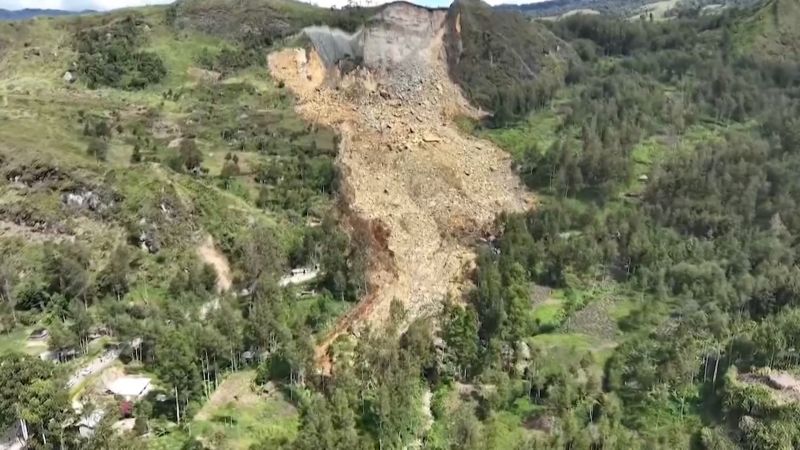The United Nations recently announced that over 670 people are feared dead after a devastating landslide struck Papua New Guinea. The calamity is believed to be one of the deadliest natural disasters in the region in recent years.
The monstrous landslide had taken place in the remote and steep highland terrain, making rescue operations and assessments extremely arduous. Serious concerns were raised about the significant loss of life and damage to property, given the immense size and the unexpected nature of the landslide.
Survivors of the disaster described the landslide as a wall of mud, rocks, and debris sweeping down the slopes of the mountain terrain, engulfing their homes, farming lands and livestock in mere moments. Lifelines including roads, bridges, and communication towers have been severely damaged or buried under the debris, further hampering the efforts of the rescue teams.
Reports from local sources suggested that the region particularly impacted by the landslide is renown for its remoteness; surrounded by a rugged terrain that poses challenges for any evacuation and aid distribution procedures. This unfortunately meant that the victims were unable to receive immediate help, which inevitably escalated the toll to a heart-wrenching number of over 670 presumed fatalities.
In the immediate aftermath of the landslide, The United Nations swiftly stepped up its role to coordinate international support for Papua New Guinea. This includes providing funds and deploying experts to aid the local government’s relief and recovery efforts. The action plan has also included working alongside other international and local NGOs, humanitarian partnerships, and civil society to form an integrated disaster response.
Regional hospitals and the few health clinics that survived the catastrophe have also been swiftly transformed into triage centres, although they are reportedly overwhelmed by the number of wounded victims. Medical supplies, as well as food and clean water, are quickly depleting, highlighting the need for the quick mobilisation of international aid.
The landslide’s impact went beyond the immediate fatalities and destroyed infrastructure; the long-term effects include the displacement thousands of individuals now homeless and at risk of disease outbreaks. The region’s agricultural economy, heavily reliant on informal subsistence farming, was also hit hard, jeopardizing the food security of the region for months to come.
This devastating event underlines the vulnerability of Papua New Guinea to natural disasters such as landslides, earthquakes, and volcanic eruptions. In the face of such tragic events, the short-term focus may be on recovery, but the long-term strategy must be built around robust measures for disaster risk reduction and adaptation.
The necessity for increased investment in local early warning systems, robust town and country planning and the construction of landslide resistant infrastructure has been emphasized repeatedly in the aftermath of the calamity. Along with this, the needs for effective measures for enhancing the resilience of the local community, through education and awareness about natural disasters, cannot be overstressed.
While the international community can provide timely rescue and rehabilitation support, the ultimate solution lies in empowering the local community to better prepare for, and respond to, such catastrophes. Hence, in the face of such crises, the most critical lesson is building resilience at the grassroots and strengthening disaster management capacities to better endure the future calamities.




